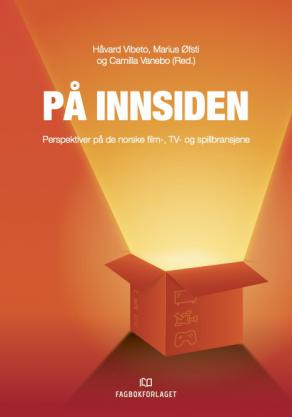Sammendrag: Tradisjonelt har filmbransjen blitt delt i tre ledd: produksjon, distribusjon og visning (Lotz, 2021). I den grad den norske filmforskningen har forholdt seg til bransjen, og ikke bare selve filmene, har denne forskningen i hovedsak tatt for seg kinoene (Evensmo, 1967; Solum og Asbjørnsen, 2000, 2008; Asbjørnsen og Solum, 2003), de filmpolitiske rammene (Engelstad, 2005; Solum, 2013; Iversen, 2016) eller knyttet til enkeltproduksjoner (Iversen og Solum, 1997, 2010).
I løpet av de siste 10–15 årene er det imidlertid kommet mer forskning på produksjonsleddet (Engelstad og Moseng, 2014; Moseng, 2016, 2017) (Bakøy, Puijk, & Helseth, 2016; Helseth & Moseng, 2020), så vel som en historisk gjennomgang av de norske filmdistributørenes historie (Bakøy & Øfsti, 2021). Det er imidlertid en påfallende mangel på forskning på de norske filmdistributørenes rolle som en del av den norske filmbransjen. I den norske filmhistorien er distributørene sjeldent omtalt, og distributørenes egne historieframstillinger (Disen, 1997; Haddal & Hoenvoll, 2015) fokuserer på deres rolle som lokale distributører av utenlandsk film.
En viktig årsak til denne manglende forskningen er nok at det først var ved årtusenskiftet at vi for alvor kunne snakke om en norsk filmindustri (Moseng, 2017). Mye tyder på at den norske filmbransjen fram til da manglet ikke bare den kontinuitet som kjennetegner en industri – men også manglet integrering både i funksjon og eierskap på tvers av produksjons-, distribusjons- og visningsleddene.
Ved hjelp av kvantitative data og historiske kilder om norske filmdistributører beskriver dette kapitlet det norske distribusjonslandskapet og de ulike strategiene som norske filmdistributører benytter. Basert på disse beskrivelsene åpner kapitlet opp for en bedre forståelse for samspillet mellom distributørleddet og den øvrige norske filmbransjen.
Nøkkelord: filmbransje, filmhistorie, distribusjon, kulturbransje, kino
Abstract: Traditionally, the film industry has been divided into three stages: production, distribution, and exhibition (Lotz, 2021). To the extent that Norwegian film research has dealt with the industry, and not just the films, this research has mainly considered cinemas (Evensmo, 1967; Solum & Asbjørnsen, 2000, 2008; Asbjørnsen & Solum, 2003), the film policy framework (Engelstad, 2005; Solum, 2013; Iversen, 2016) or been linked to individual productions (Iversen & Solum, 1997, 2010).
During the last 10–15 years, however, there has been more research on the production stage (Engelstad & Moseng, 2014; Moseng, 2016, 2017; Bakøy, Puijk, & Helseth, 2016; Helseth & Moseng, 2020), as well as a historical review of the history of the Norwegian film distributors (Bakøy & Øfsti, 2021). However, there is a striking lack of research on the role of Norwegian film distributors as part of the wider Norwegian film industry. In works on film history (Iversen, 2016; Evensmo, 1967), the distributors are rarely mentioned, and the distributors’ historical publications (Disen, 1997; Haddal & Hoenvoll, 2015) focus on their role as local distributors of foreign films.
An important reason for this lack of research is probably that it was only at the turn of the millennium that we could seriously talk about the Norwegian film industry (Moseng, 2017). There are many indications that the Norwegian film industry up until then not only lacked the continuity that characterizes an industry – but also lacked integration both in function and ownership across the production, distribution, and exhibition stages.
Using quantitative data and historical sources about Norwegian film distributors, this chapter describes the Norwegian distribution landscape and the various strategies used by Norwegian film distributors. Based on these descriptions, the chapter creates the foundations of a better understanding of the interaction between the distributors and the rest of the Norwegian film industry.
Keywords: film industry, film history, distribution, culture industry, cinema business


